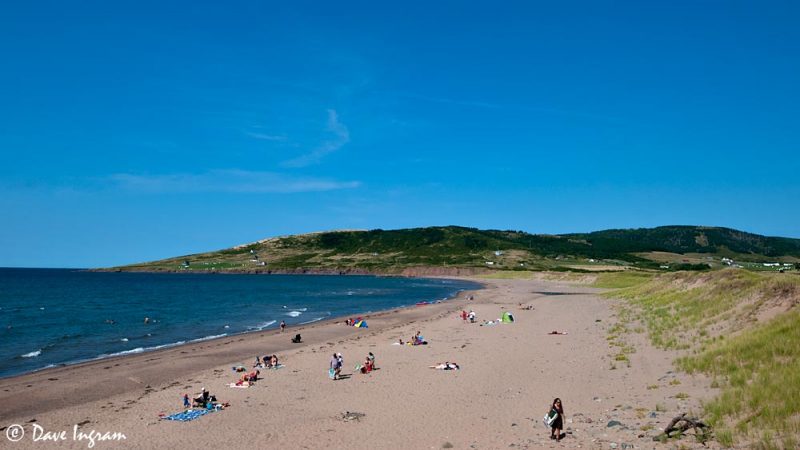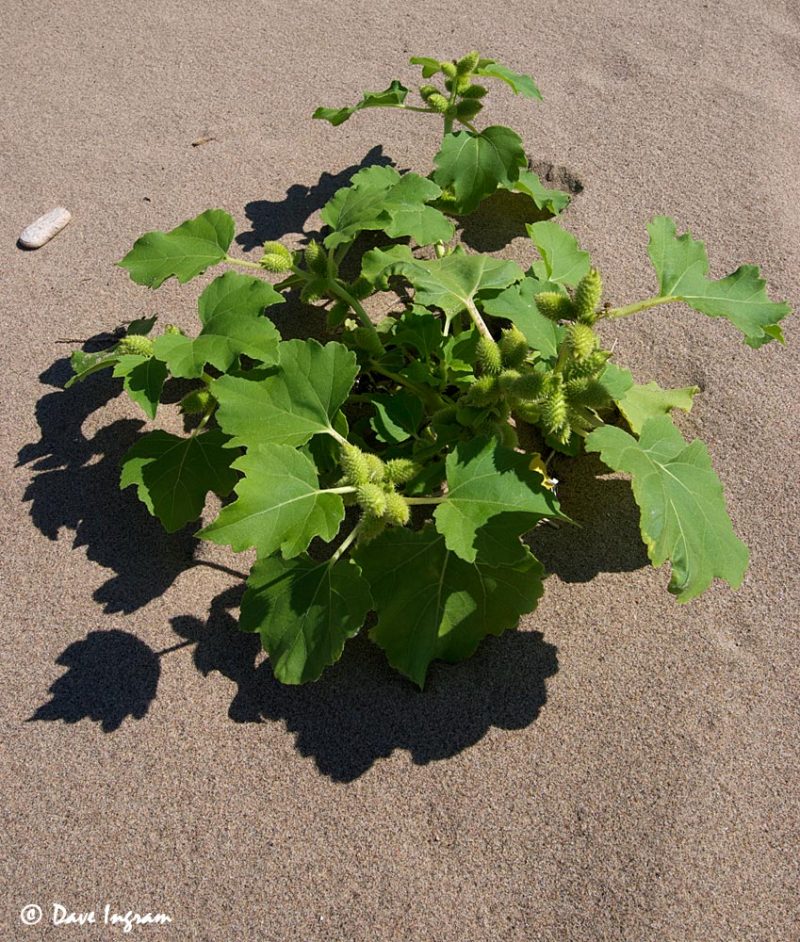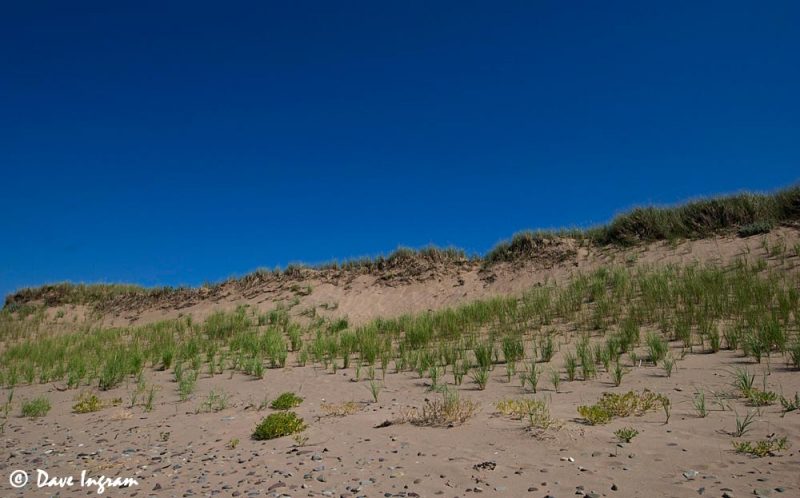
A real highlight on our east coast trip, the stunning beach, great swimming and some good birding,made West Mabou Beach Provincial Park an excellent nature viewing destination. The fascinating botany of coastal dune ecosystems should not be overlooked.
Of course, trading off child-minding meant that our botanical explorations had to be short. Even so, Jocie and I were able to find a couple of unusual plants. These plants were at the top of the beach where the American beachgrass (Ammophila breviligulata) climbs down from the dunes.
At West Mabou Beach, American beach grass is a native east coast grass. It is also common in locations on Vancouver Island. However, in BC it is considered invasive and can seriously alter dune ecosystems. See Eflora BC’s American beachgrass (Ammophila breviligulata) description of this plant. In Pacific Rim National Park Reserve, there is an ongoing effort to remove introduced American beachgrass and European beachgrass from the dunes.
Common Saltwort
Common saltwort (Salsola kali) is a distinctive looking plant. It has a variety of common names including prickly saltwort, Russian thistle, and prickly glasswort. The common name i associated with the habitat in which the plant is found. Coastal species are more likely to be called saltwort or glasswort. In contrast, those found inland in fields go by thistle.
Both common names suit the appearance of the plant. Its leaves and stems are fleshy, suggesting a saltwort. The entire plant is very prickly which would suggest a thistle. Near the ocean, it is a pioneer species, adapted to living in the shifting sand at the edge of the dunes.
Rough Cocklebur

Thanks to a comment from a reader of the blog I’ve updated the identification of this plant to Rough Cocklebur (Xanthium strumarium). The original identification was based on using the reference Roland’s Flora of Nova Scotia but apparently this was incorrect. While Jimsonweed looks superficially similar, the characteristics of hairless stems, single veined leaves and unpleasant odour are good field marks that make it different from rough cocklebur. There are a number of recent references for rough cocklebur in Nova Scotia on iNaturalist.
The large spiky seed pods of Jimsonweed (Datura stramonium) are also distinctive in appearance and make the plant easy to identify. The name “Jimson” is a shortened version of Jamestown and references the location where a group of soldiers who ate the leaves of the plant in 1676 experienced 11 days of intense hallucinations. That being said, Jimsonweed is extremely toxic and contains tropane alkaloids including atropine, hyoscine, and hyoscyamine. Misuse of jimsonweed as a hallucinogenic has resulted in death.
Once you start looking at plants more carefully it becomes easier to appreciate (and spot) the species that don’t quite fit. Such was the case with these two non-native plants at dunes at West Mabou Beach. It’s amazing what you can find!

